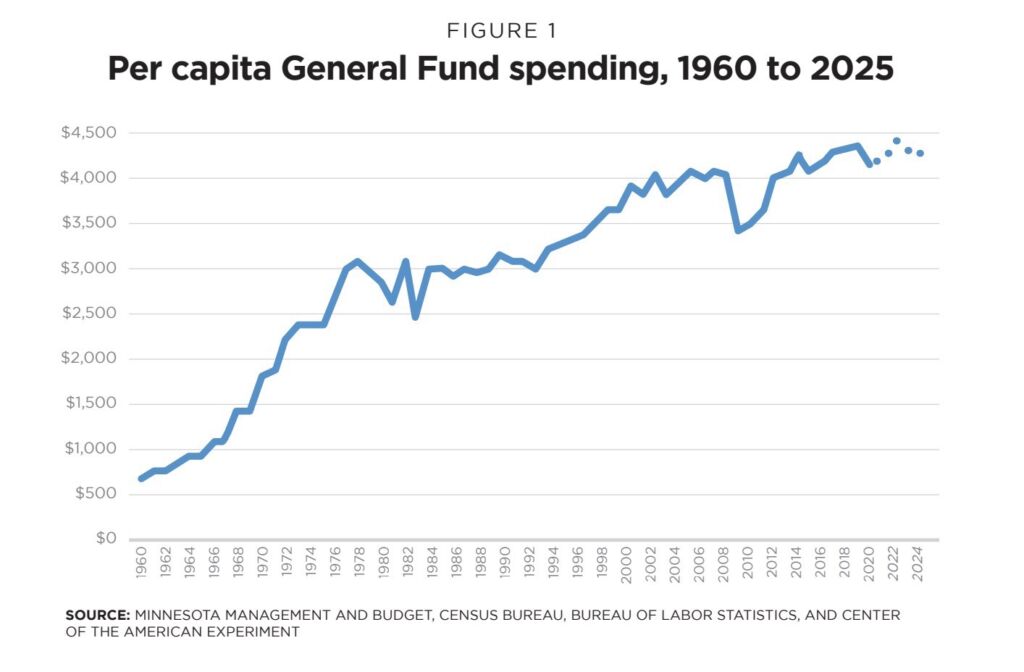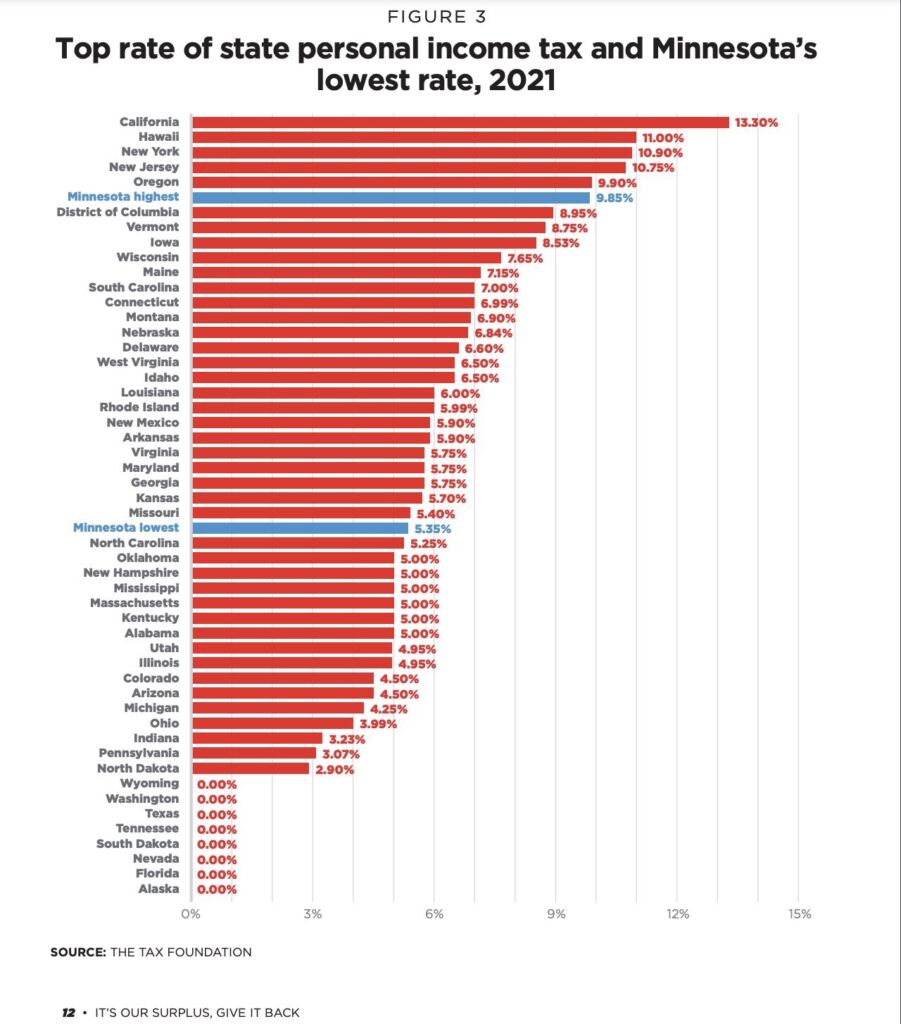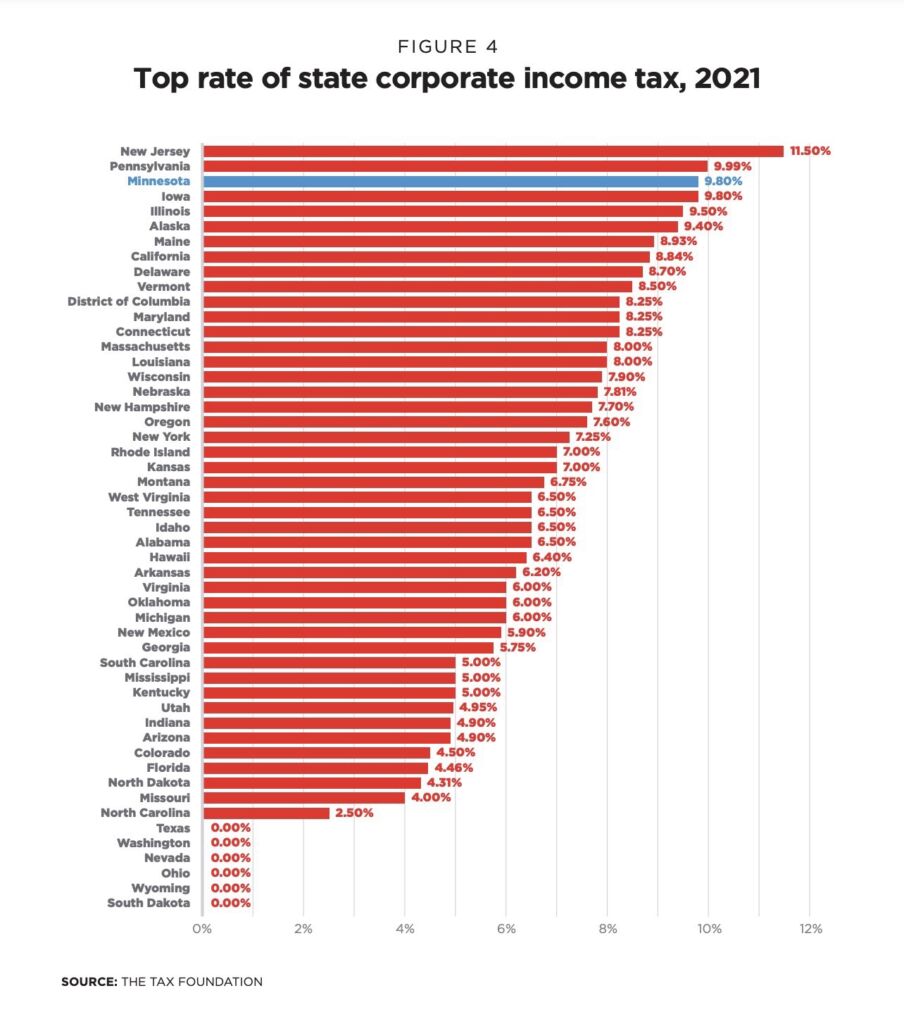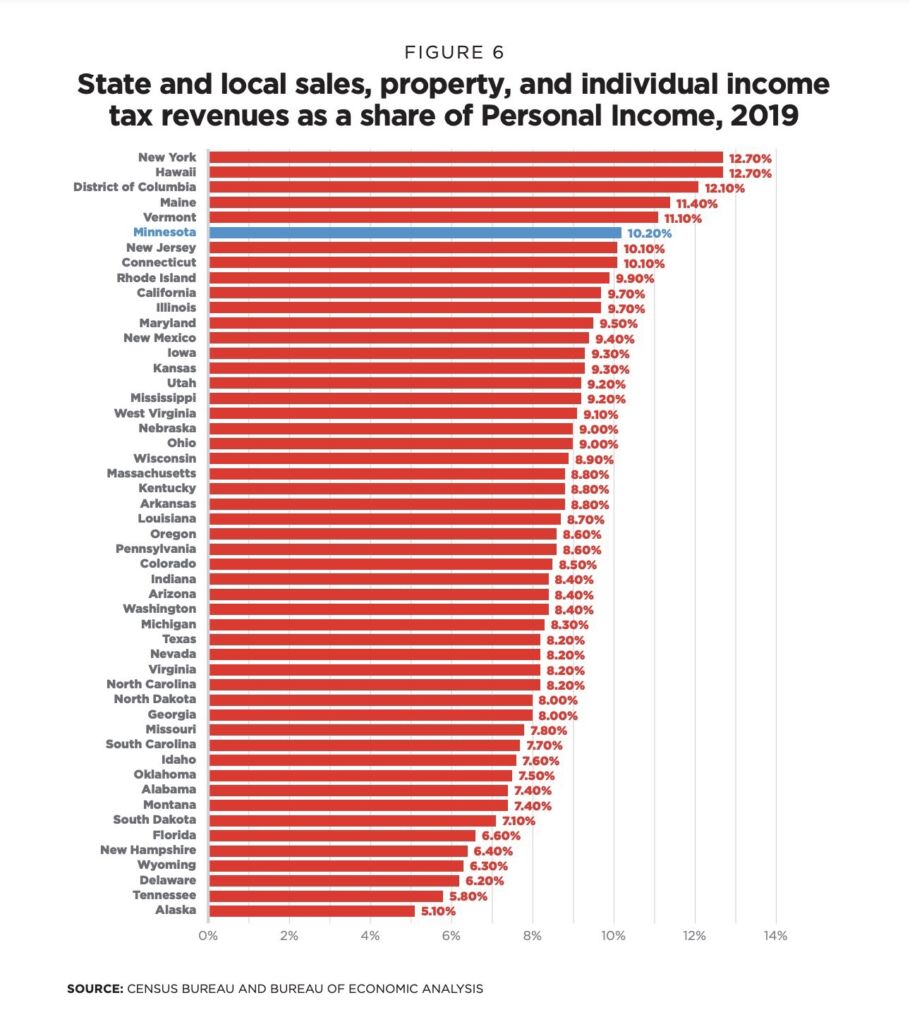Yes, taxes in Minnesota are too high
The Pioneer Press asks
Minnesota has a surplus of nearly $18 billion. Are taxes too high? Or spending too low?
The answer apparently depends on who you ask. But what do the numbers say precisely?
Minnesota’s spending is anything but low
In 2020, Minnesota’s state government spent $4,348.20 for every state resident. This was the highest amount on record and was 5.9 percent higher than in 2016.
In fact, Minnesota’s spending has only grown in both population and inflation-adjusted terms.

Even nationally, Minnesota ranks at the top when it comes to spending. In 2019, Minnesota ranked 14th in total direct state and local spending per resident, above the national average. The same was true for previous years.

The same goes for taxes
As of 2021, Minnesota’s top income tax rate was the sixth highest in the country. But even our lowest income tax rate was higher than the top income tax rate in 24 states. And with states like Iowa and Georgia phasing in flat tax rates that are lower than Minnesota’s lowest tax rate, our position is going to become even more unfavorable.

Unfortunately, it’s not just individual income taxes that are high. Our corporate tax rate was the third highest in the country as of 2021. But Pennsylvania passed a law this year to gradually cut its corporate tax rate, which will leave us with the second highest tax rate beginning in 2023.

And when we account for all tax collections as a percent of income, the Minnesota government collected 10.2 percent of all income in the state — the sixth highest proportion in the country.

What the numbers say
Certainly, federal money injected into the economy during the pandemic has contributed to the historic surplus. But even as the Pioneer Press notes, the Minnesota state has had surpluses for the last nine years.
So, no we do not have a surplus because spending is too low. Minnesota is a high-tax, high-spending state. It has been that way for a long time.